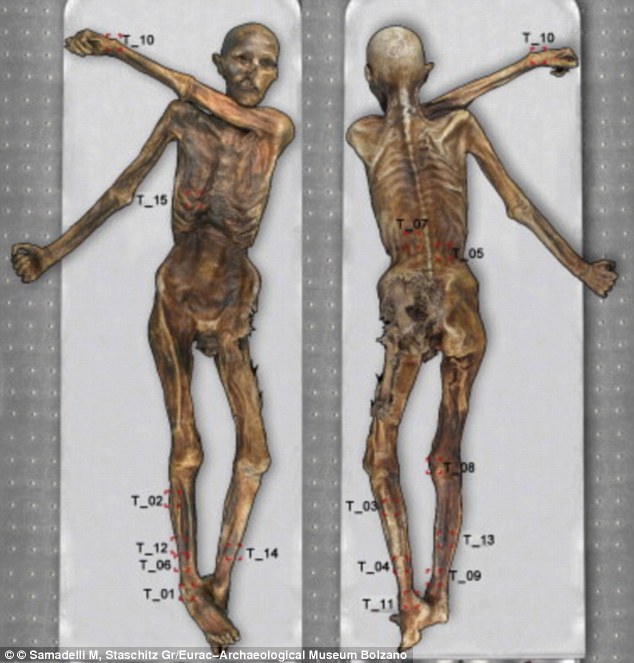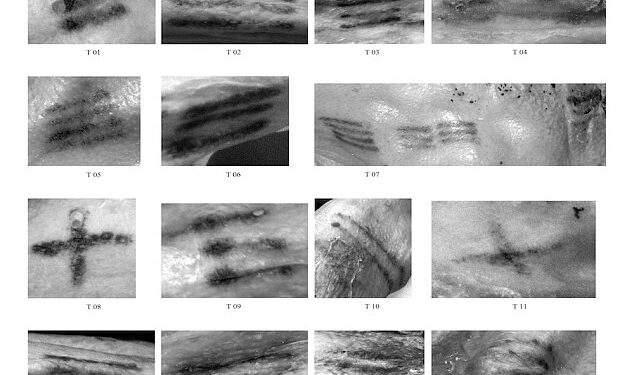Four thin, black lines placed on top of each other bring Mitzi, a 5,300-year-old mummified iceman, to 61 tattoos.
The discovery of the new tattoo, which was discovered on the lower side of tzi’s right ribcage, “was a big surprise because we didn’t expect to see a new tattoo,” said Albert Zink, the study’s senior researcher and head of the Institute for Mummies and the Iceman at the European Research Academy in Italy.
Even the hikers who discovered him in the Italian Alps in 1991 realized he had tattoos on his skin.

The researchers employed technology created for the art industry to conduct their investigation: a camera with specific optics that can tell whether an artist painted over another work on the same canvas.
Different wavelengths of light may be captured by the various lenses, ranging from ultraviolet light at 300 nanometers (billionths of a meter) to infrared light at 1,000 nm. (Visible light has wavelengths ranging from 400 to 700 nanometers.)
According to the researchers, all 61 tattoos comprise black lines that measure 0.3 inches to 1.6 inches (0.7 to 4 cm) in length and are organized in groups of two, three, or four parallel lines.
Two tattoo groups resemble plus signs, one on the right knee and the other on the left Achilles tendon.

The found tattoo is difficult to detect because the mummy’s skin has darkened over time, and the tattoos themselves are black.
“We know those were genuine tattoos,” Zink added. “They created incisions into the skin, and then they poured in charcoal mixed with certain plants,” said the makers of the tattoos.
The rest of Tzi’s tattoos are mainly on his lower back and legs, between the knee and the foot. The researchers are unsure why Tzi received these tattoos and if they were therapeutic, symbolic, or religious.
“Many people believe it was a form of treatment since most of the tattoos are near locations where he presumably had discomfort,” Zink added.
According to research, including one published in the journal Inflammopharmacology in 2013, the tattoos may have been used as a medical kind of acupuncture to cure injuries or chronic pain.
According to Zink, many of the tattoos, for example, are on the mummy’s lower back and around joints, sites where Tzi may have felt agony.
Because he walked so much in the Alps, the iceman’s knees and ankles, both tattooed, were most certainly affected.
The ribcage tattoo isn’t on the iceman’s back or a joint, but “on the other hand,” Zink speculated, “he may have suffered from chest pain.”
According to Zink, the mummy might have had gallstones, whipworms in his intestines, or atherosclerosis, a disorder in which plaque builds up in the arteries.
According to Dr. Walter Kean, a clinical professor of rheumatology at McMaster University in Canada who has researched this but was not involved in the current study, the ribcage tattoo might represent a region where the felt “referred” pain or discomfort at a site that is far from the actual pain.























